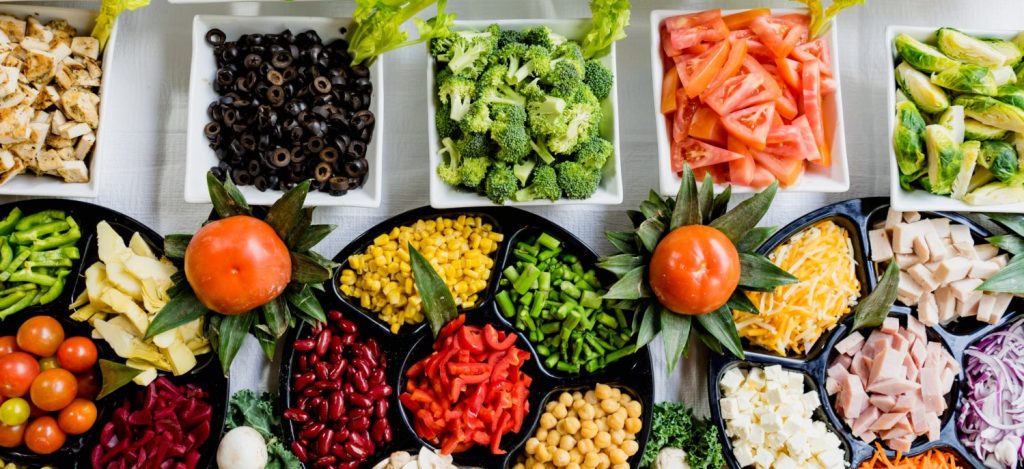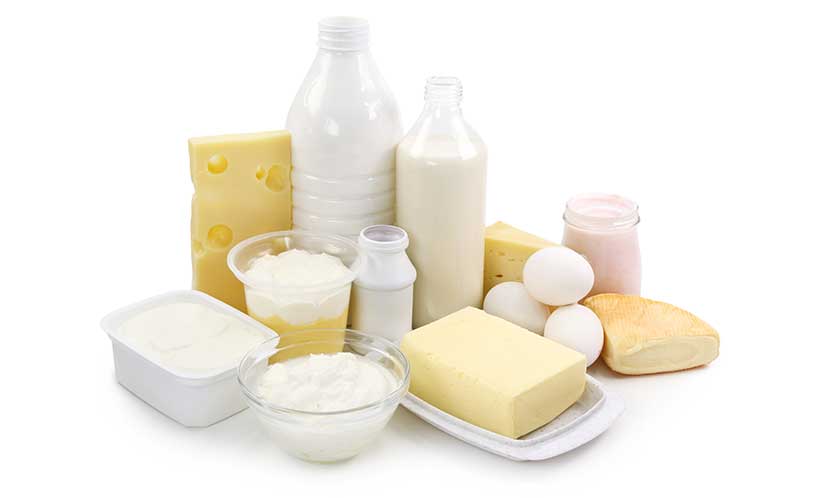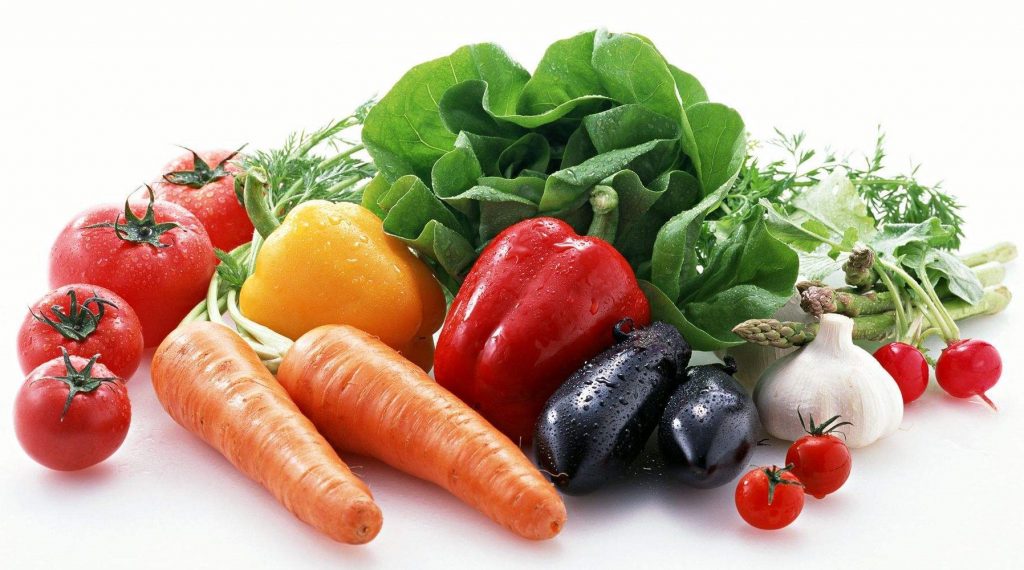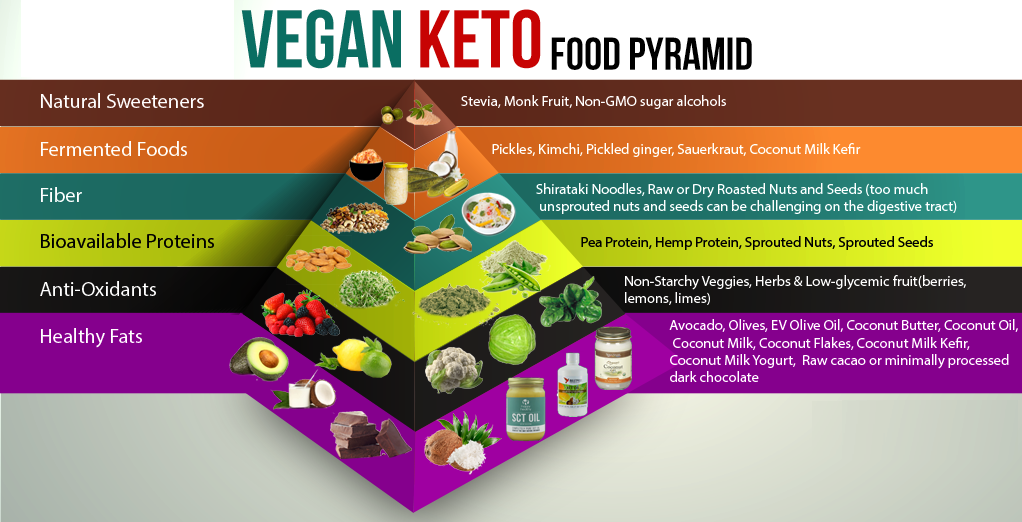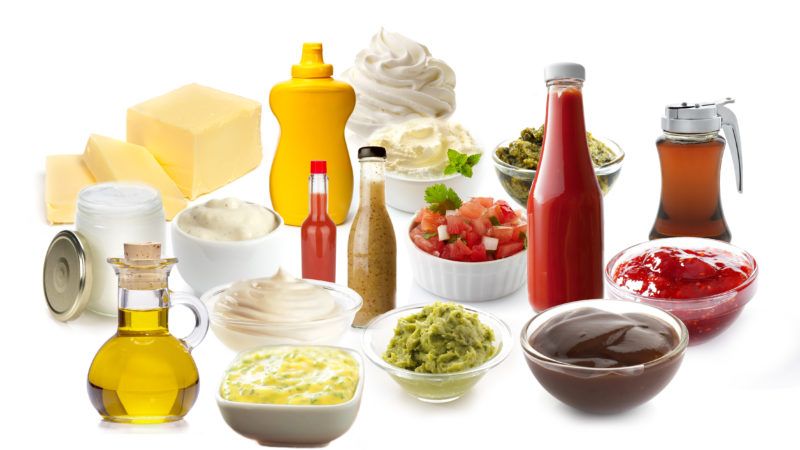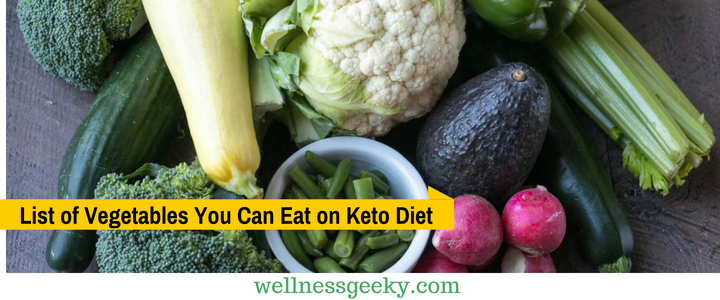
The Keto diet is a popular low carbohydrate or a nil diet plan with a high intake of fat.
The diet plan, trick your body to use body fat as a source of energy instead of using carbohydrates.
While undergoing the Keto diet plan, the low-carb foods will be rich in protein.
A ketogenic diet cleverly changes the body's dependability for energy, which generally takes it from carbohydrates.
When the body is unable to draw energy from carbs, it turns to other sources and consumes body fats which in turn help to reduce weight loss.
When you are into Keto dieting, the body changes to ketosis mode, which is a natural process of the body for survival and starts to produce ketones.
During the process, the liver converts fatty acids to ketone bodies and the ketones will become the new source of energy in the body.
Keto dieting helps you to reduce unwanted weight and is also beneficial to managing type 2 diabetes, reducing blood sugar levels, enhancing mental focus conditions, lowering blood pressure, and low appetite, improving heart health, and many other health benefits.
What to Eat and to Avoid
Avoid
As a benchmark rule, before you start Keto dieting, it would always be better to consult with your doctor.
A Keto meal plan is not a preferred choice for people who are suffering from kidney or liver diseases.
People suffering from gastrointestinal disorders also should desist from doing Keto dieting.
Before you start a Keto diet plan, you will have to plan it systematically.
You should give proper planning for the diet, and it should be related to how fast you want to convert your body to a ketogenic state.
You should not take too many carbohydrates that are coming mostly from nuts, vegetables, and dairy products.
You must also avoid all refined carbs like bread, cereals pasta, or tubers like sweet potatoes and processed food, which have high carbs.
Fruits like oranges, bananas, or apples will come to this list naturally.
Foods like honey, maple syrup, and agave that have high calories are not ketogenic and hence avoided.
Eat
- Meats of beef, fish, lamb, etc.
- All greeny vegetables like spinach, cauliflower
- Bell pepper and green bean vegetables are included here as low-carb vegetables.
- High-fat dairy food products like high-fat cream, hard cheeses, butter, etc.
- Berries and food like Avocado such as blackberries raspberries,
- Sweeteners like monk fruit, stevia, erythritol, monk fruit
- Foods like high-fat salad dressing, coconut oil, saturated fats, etc.
Keto Diet Grocery List
It will always be challenging to select the right Ketogenic grocery. The following list of Ketogenic groceries will help you to choose the right groceries.
The list contains, meats, dairy, oil, and fats, vegetable and fruits, sweeteners and baking supplies, condiments, spices and herbs, drinks and liquids, etc.
Meats/Proteins:
Pay attention while shopping these items to have high fat and a moderate level of protein.
The protein content should be of high quality and hence look for grass-fed meat items and fatty wild fish.
Consumption of chicken and pork should be limited, as it is less likely to raise properly.
Also avoid consuming processed meats, as there are chances to have added ingredients like carbs and sugar.
Fats and Oils:
Check the fat and oil before you consume. Many oil and fat contains more than the accepted level of carbohydrates.
Therefore look for low-carb oil and fats.
Vegetables and Fruits:
On the grocery list, you can find low-carb vegetables, which will help you to keep healthy and meet the fiber requirement.
You have to be mindful that many vegetables do have a sufficient amount of carbs, hence select those that are less in carbs.
In the fruits section, berries and avocado are more ideal than any other fruits.
Sweeteners & Baking:
Check the carbs level of these items before you purchase these products.
It will be better to limit the use of these items, as they have no nutritional values and are not suitable for Keto diet food.
Condiments:
Homemade condiments are good than packed items.
However, if you are buying condiments, check their ingredients and only condiments which are less in carbs.
Dairy:
Look for organic dairy products. Dairy products are rich in fat, and if you are not allergic to dairy products, you can add that to your shopping list.
Spices and Herbs:
All pure and natural herbs are good but make sure they come with any added synthetic ingredients.
Drinks/Liquid:
Raw milk with full fat is acceptable in small quantities. If you are consuming plant-based milk, then it shouldn't have carrageenan or any other additives.
Check the Grocery List:
Beef:
Steak, prime rib, veal, roast beef, baby back ribs, corned beef, ground beef, stew meats, and hamburger.
Organ meats:
Liver, heart, kidney, offal, tongue
Other meats:
Goat, bison, lamb
Seafood:
Salmon, trout, catfish, tuna, mahi-mahi, halibut, mackerel, bass, cod, sardines, orange roughy, tilapia, clams, haddock, anchovies, shrimps, lobster, scallops, crabs, Oyster, clams, mussels.
Poultry:
Chicken, duck, quail, wild game, turkey, Cornish hen, chicken broth, turkey sausage, turkey bacon.
Deli meats:
Salami, prosciutto cold cuts, pepperoni.
Pork:
Pork loin, ham, bacon, ground pork, pork chops, tenderloin.
Dairy Products:
Raw-heavy creams, mayonnaise, sour cream, full-fat Greek yogurt, kefir, ghee, raw-whole milk, butter (grass-fed).
Cheeses:
Feta, parmesan, brie, cheddar, Swiss, Monterrey jack, cottage cheese, string cheese, cream cheese, blue cheese, Colby, mozzarella, goat cheese
Fats and Oils:
Olive oil, coconut oil, MT oil, avocado oil
Nuts/Seeds:
Macadamia nuts, hazelnuts, almonds, pistachios, pecans, walnuts, pumpkin seeds, sunflower seeds, sesame seeds, chia seeds, and flaxseeds.
Other Fats:
Cocoa butter, duck fat, coconut butter, bacon fat
Keto Vegetables
Kale, leafy greens, spinach, bok coy, radicchio, bean sprouts, brussels sprouts, broccoli, romaine lettuce, onions, garlic, asparagus, bell peppers, celery, kohlrabi, Portobello mushrooms, white mushrooms, zucchini, spaghetti squash, black olives, green olives, cabbage, cauliflower, okra, leeks, snow peas, Artichokes, etc.
Fermented Foods:
Kimchi, pickles, natto, sauerkraut, kefir, salsa.
Keto fruits:
Mulberries, avocados, blueberries, strawberries, cherries, cranberries, and raspberries.
Baking Supplies:
Almond flour, coconut flour, cocoa powder, coconut flakes, vanilla, baking soda, sea salt
Sweeteners:
Pure stevia powder, erythritol, monk fruit, mannitol, pure stevia drops, xylitol
Condiments:
Brown mustard, yellow mustard, mayonnaise, low-carb salsa, hot sauce, horseradish, sugar-free ketchup, coconut aminos, soy sauce, low-sugar high-fat salad dressings (blue cheese), Worcestershire sauce, lime juice, sugar-free syrup, lemon juice.
Spices and Herbs:
Oregano, thyme, oregano, rosemary, cilantro, basil, chili powder, cinnamon, cumin, cayenne, pepper, nutmeg, salt, and pepper.
Drinks/Liquids:
Unsweetened coconut milk, raw milk, almond milk, unsweetened coffee or tea, sugar-free heavy creamer, and unsweetened cashew milk.
Keeping the grocery list will help you to select the right choice of low-carb ketogenic grocery items, which will work like a shortlisted item.
Once you familiarize yourself with the listed products, it will make it easy for shopping.
Vegan Keto
Vegan Keto dieting, is sometimes not suitable for all types of people, especially individuals suffering from obesity, type 1 & 2 diabetes, Alzheimer's disease, Parkinson's disease, and epilepsy.
However, Keto food will be helpful for people suffering from these conditions.
However, a vegetarian Keto diet is good for people who suffer from climate change, animal food allergies or aversion, and health issues.
Some people feel very healthy and comfortable while consuming low-carb non-veg foods, especially animal meats or dairy products, whereas some individuals feel much better on high-carbohydrate vegan diets.
So what is the best solution for people who want to stick to a vegan keto diet?
For people who want to stick to vegan Keto dieting and get rid of animal suffering and improve their overall health condition, stick to the following rules.
- Should not take carbs more than 35 grams per day.
- Avoid all types of fish, animals, and all animal products.
- Add more low-carb vegetables to the diet.
- Consume plant-based fats and make sure to have more than 70% of plant fat.
- Make sure to consume 25% calories from plant-based food proteins.
- Consume supplements to meet the vitamin deficiencies, such as B12, D3, B6, Iron, Taurine, Zinc, and DHA & EPA.
It may look hard to limit the intake of carbs when you are on the ketogenic diet.
The best way to control the intake of carbs during a vegan Keto diet is to restrict the consumption of carbohydrates by selecting vegetables that are less or nil in carbs.
Avoid the following high carbs in your diet.
Do Not Eat:
- Grains – rice, corn, cereal, wheat, etc.
- Legumes – black beans, peas, lentils, etc.
- Sugar – maple syrup, honey, agave, etc.
- Fruit – bananas, apples, oranges, etc.
- Roots – yams, potatoes, etc.
The benefits of a keto diet are enormous. You have to stick to a sustainable Keto diet plan on a long-term basis, for accomplishing your weight loss plan.
When you stick to the Keto diet plan, the body will transform into a ketosis mode, and instead of using glucose for energy, the body will start using fat as the energy source to meet the metabolic activities.
The significant focus should always be to keep less or nil carbohydrate intake.
Vegan Keto Grocery List:
Nuts:
Brazil nuts, hazelnuts, pecans, peanuts, walnuts, macadamia nuts
Almonds are rich in protein
Cashews, pine nuts, and pistachios have high carbs and are hence consumed in less quantity or occasionally.
Seeds:
Flax seeds, chia seeds,
Hemp seeds, sunflower seeds, pumpkin seeds. (All these are rich in proteins.)
Vegan Butter:
Coconut butter, macadamia nut butter, tahini, sunflower seed butter, walnut butter, hazelnut butter, and pecan butter.
Almond butter, peanut butter (All are rich in proteins)
Vegan Whole Fat:
Olives, avocados, coconut
Vegetable Oil:
Avocado oil, coconut oil, hazelnut oil, olive oil, MCT oil, almond oil, cocoa butter, flaxseed oil, walnut oil, and macadamia nut oil.
Low Carb Vegetables:
Arugula, bell peppers, artichoke hearts, asparagus, broccoli, bok choy, cabbage, celery, cauliflower, collards, cucumbers, chard, dandelion greens, daikon radish, eggplant, fennel, endive, fiddleheads, lettuce, mustard greens, mushrooms, okra, squash (summer type), turnips, zucchini, rhubarb, radishes, spinach, shallots.
Beets, Brussels sprouts, carrots, celeriac, kale, jicama, onion, rutabaga, and squash (winter type).
These items have little more carbs, hence consume occasionally.
Low Carb Fruits:
Avocado, lemon, cranberries, lime, raspberries, strawberries, tomatoes, olives, coconut.
Blueberries, watermelon. (Both have little more presence of carbs, hence consume it less)
Low Carb Vegan Pantry Staples:
Baking powder, cocoa powder, almond flour, baking soda, hearts of palm, glucomannan powder, coconut milk, coconut flour, nutritional yeast, vanilla extract (with low sugar), jackfruit (green or canned in brine), Psyllium husk, artichoke hearts, dark chocolate (low sugar).
Low Carb Vegan Refrigerated Staples:
Micro-greens, all types of sprouts, apple cider vinegar, pickles (sugar-free type), Yogurt (dairy-free - unsweetened), cheese (dairy-free), seitan. All these have high carbs; hence they should occasionally be consumed.
Tofu, Tempeh, and Seitan are rich in protein.
Vegan Keto Meal Staples:
Nori sheets, kelp flakes, kelp noodles, herbs, spices, roasted seaweed snacks, shirataki noodles, and Edamame.
Lupine beans (It has high proteins)
Vegan Keto Sauces and Condiments:
Mustard, chili sauce, hot sauce, soy sauce, coconut aminos, tamari, tomato sauce, vinegar (balsamic, white wine, rice wine), and wasabi paste.
Vegan Keto Refrigerator Items:
Cauliflower rice, meat substitutes, frozen vegetables, wink frozen dessert, frozen berries.
Halo Top Dairy-Free Dessert (It has high carbs; hence you may consume less).
Egg and Dairy Free Keto Protein Powders and Bars:
Julian Bakery Pegan Bars, Vega Sport Protein, Garden of Life RAW, Sun Warrior Classic Plus, Nugo Slim Vegan Bars, Vega Clean Protein, Plain hemp protein powder, Plain soy protein powder, Plain pea protein powder, Sun Warrior Blend.
Raw Revolution Glo Bars. It has bit higher carbs; hence its use should be limited.
Keto Smoothie:
Chlorella, Moringa, Turmeric, Amla powder, Spirulina.
Beetroot powder. It has high carbs, hence do not consume regularly.
Best Low Carb Vegetables
- Broccoli
- Asparagus
- Artichoke Hearts
- Arugula
- Artichoke Hearts
- Bell Peppers
- Beets
- Green Beans
- Red Cabbage
- Carrots
- Celery
- Cauliflower
- Chard
Best Veggies to Eat
There are some starchy vegetables like squash, and potatoes that are too high with crab contain.
Likewise, some of the fruits have a high amount of fat.
The keto-approved fruits are:
- Raspberries
- Strawberries
- Avocado
- Blackberries
Vegan Keto Recipes for a Week:
Breakfast:
- Cheesy Thyme Waffles
- Hemp Heart Porridge
- Keto Coffeecake
- Overnight Oats
- Artichoke Breakfast Casserole
- Green Coffee Shake
- Brownie Muffins
Lunch/Dinner
- Fresh Bell Pepper Basil Pizza
- Sesame Tofu and Eggplant
- Fried Mac & Cheese
- Grilled Cheese Sandwich
- Sesame Almond Zoodles Bowl
- Broccoli and Cheese Fritters
- Cauliflower Mac and Cheese
Side Dishes
- Fried Goat Cheese Salad
- Vegan Keto Club Salad
- Tofu and Bok Choy Salad
- Zucchini Ribbons & Avocado Walnut Pesto
- Greek Collard Wrap
- Roasted Mushroom & Walnut Cauliflower Grits
- Lemon sweet rolls
Can I Eat Carrots on Keto?
Carrots are among the cheapest veggies, and they also happen to be one of the most nutritious. Carrots contain vitamin A, vitamin C, vitamin E, potassium, and fiber. They also contain no fat and are a good source of carotenoids, which are naturally occurring pigments that provide health benefits.
Some people believe that they are limited by their carbohydrate intake, but not true. On the day of the meal, you can eat as many carrots as you'd like. Carrots are so good for you that some may even argue that they are better than a cupcake! These Are Some of the Best Snacks for Keto. While carrot sticks won't ever replace a bag of chips, you don't need to completely give up sweets.
Conclusion
Keto diet plans have both good and bad effects, as it readily changes the whole system of the body.
When planning your ketogenic diet, you should be careful about the ratio of the Keto diet.
Your carbs intake should be less than 10 percent or nil. You can consume about 15-25 percent calories and the remaining you can have from fat.
Keto meals help you to reduce unwanted weight and keep you stay fit.
Apart from weight loss management, it has a lot of medical benefits.
Keto dieting is not just dieting, but it is a way of life, which required conscious effort to maintain the dieting.
